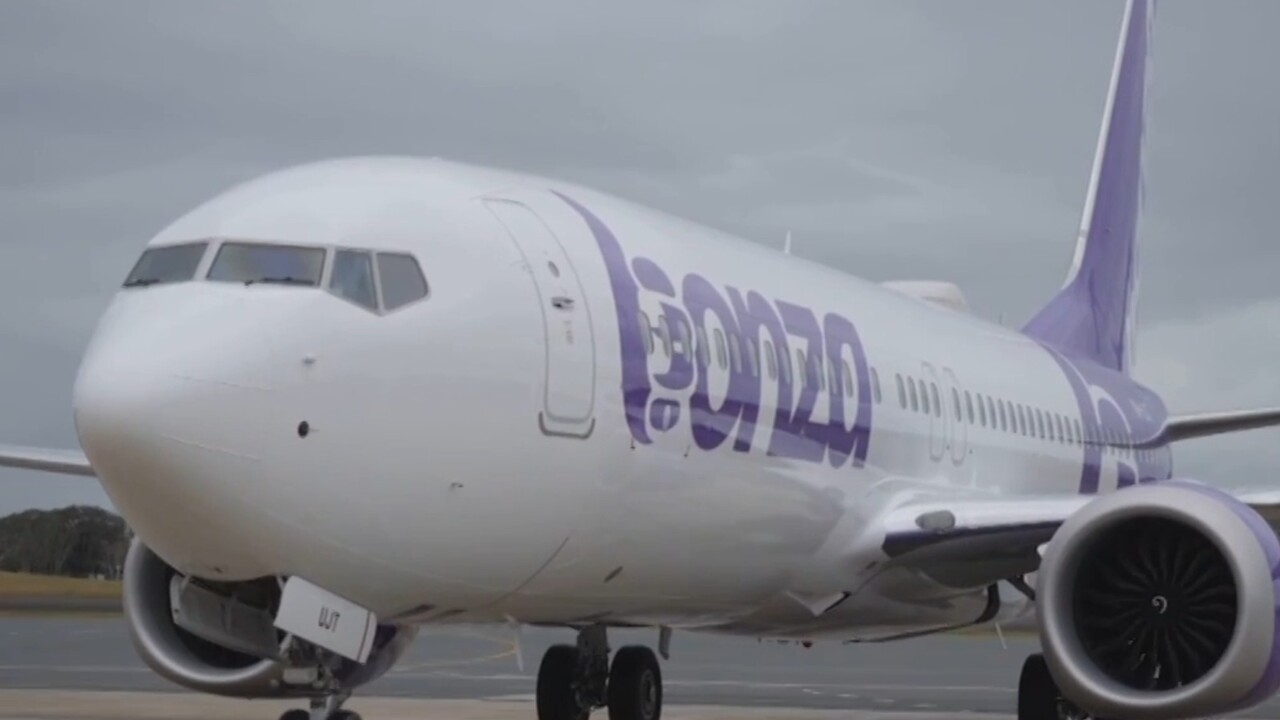Rex’s audacious $99 fare to Perth – genius move or desperation?
Difficulties at Rex Airlines have not gone unnoticed. So will its latest bold fare price move be enough to allow it to finally turn a profit and avoid a fate similar to Bonza?

Rex’s efforts to steal market share from its much larger rivals have taken a daring turn as the former regional carrier launches transcontinental flights for a bargain $99 one way.
The sale fare is intended to stimulate demand on Melbourne-Perth, which is considered one of the most lucrative routes in the world, generating almost $1bn in revenue in the first half of 2023.
Analysis by the Australian Airports Association showed Qantas typically charged between $400 and $450 a fare on Melbourne to Perth, Jetstar $380 and Virgin between $280 and $310.
The arrival of Rex was already putting downward pressure on fares, with the AAA report finding the average cheapest ticket on the route was $340 in July down from $550 earlier in the year.
Outside of the sale period, Rex’s fare on the route was $299 in economy one way and $999 in business.
“Melbourne-Perth has seen dramatic fare increases, with capacity on the route constrained by incumbent carriers as part of yield management, with 7 per cent fewer seats on offer in 2023 than in 2019,” said AAA head of policy Natalie Heazlewood.
As a result the annual average lowest available fare was still 45 per cent more expensive than the 2019 pre-Covid lowest price, she added.
Respected aviation commentator Peter Harbison said if any route needed competition it was Melbourne-Perth and he was hopeful Rex would make a go of it.
“I was just looking at prices yesterday, and if I wanted to leave Perth at 11.30pm, I’d have the choice of flying on Rex or business class on Qantas for 28 times the price. $99 on Rex and $2759 on Qantas,” said Mr Harbison.
“The prices are ludicrous one way.”

Filling seats
Rex was no doubt hoping to fill its 737s on the route after mixed success with its expansion into major city markets and the Golden Triangle using former Virgin Australia aircraft.
Despite largely positive customer feedback and a consistent on-time performance, Rex was yet to turn a profit from its jet operation launched in 2021.
Figures for the first half of the 2024 financial year were not terribly encouraging, with Rex reporting passenger numbers increased a mere 0.4 per cent compared to the corresponding period, despite capacity climbing 13.7 per cent.
As a result average passenger loads dropped from 77.3 per cent in the first half of 2023, to 73.6 per cent in the six months to December.
“They haven’t been able to compete for those larger corporate deals.” – ATIA chief Dean Long
On a more positive note, Rex’s loss for the half was well down on the previous corresponding period, at $3.2m compared to $16.5m.
As well as its 737 operation, and regional services flown by 34-seat Saab 340s, Rex has a joint venture with FIFO operator National Jet Express which has expanded its customer base in the thriving resources sector.
The need for Rex to prosper and continue to expand has never been greater, following the demise of short-lived low cost carrier Bonza.
In its May airline monitoring report, the Australian Competition and Consumer Commission noted “the prospects for a more competitive domestic aviation industry relied on Rex expanding its offering”.
“However, like Bonza, (Rex) has not been able to grow its market share (of 5 per cent in March 2024) to a level where it would offer a meaningful competitive constraint on the Qantas Group and Virgin Australia,” said the ACCC.
“Such expansion would require a larger fleet of aircraft and access to additional slots at Sydney Airport.”
Challenges ahead
After trumpeting the delivery of its tenth Boeing 737-800 in December, Rex has returned to a fleet of nine after one of the jets was returned to the lessor in line with contractual arrangements.
Rex’s regional operation has also been curtailed by a shortage of pilots and engineers, with 23 of its 57 Saab 340s out of action, some for more than a year.
The difficulties have not gone unnoticed by investors with Rex’s share price taking a battering in recent months, slumping to 64c from $1.09 a year ago.
Not even a change in leadership could arrest the slide, after the board voted out long-serving chairman Lim Kim Hai this month, and promoted deputy John Sharp.
Australian Travel Industry Association chief executive Dean Long said Rex was still a “very small player domestically” but important to the aviation sector.
“The biggest issue we have, because the corporate market is still powering so much of domestic Australia on key routes, it’s very difficult for Rex to break into that space without a broader network and without international alliances,” said Mr Long.
“That’s where they haven’t got the formula right yet. They haven’t been able to compete for those larger corporate deals because the network isn’t there and the frequency isn’t there.”
He said it was also critical for smaller players to have adequate access to Sydney Airport, with valuable slots at Kingsford Smith considered the “ultimate determinant of success”.
“If you can’t get sufficient slots at Sydney Airport to operate frequencies to the destinations people want to go to, you’re not going to have a profitable airline,” Mr Long said.
“That’s why we’ve seen so many of them fail.”







To join the conversation, please log in. Don't have an account? Register
Join the conversation, you are commenting as Logout